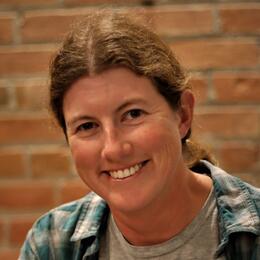After a hiatus from Battery Island that lasted for several years, the famous White Ibis returned to Southport in 2012. They had spent previous summers nesting farther north on the Cape Fear River, but experienced losses due to high tides and storm-related flooding. This spring, they collectively chose to pick up where they left off on Battery Island, raising young in cedar and yaupon trees.
Because it is not a statewide waterbird census year, our staff and volunteers did not count the nesting ibis; however, thousands of pairs were visible from the outside of the island as white dots sitting on their nests. White Ibis begin life as a brown spotted egg, and hatch out as fluffy black chicks with a white dot on their heads and a mottled pink and black bill. Their parents fly back and forth to the mainland, foraging for food such as crustaceans including crayfish, aquatic insects, and small fish.
Unlike terns, which carry whole prey items back to their young, ibis regurgitate food for their chicks. As the chicks grow bigger, their feeding becomes more insistent. A gangly chick will grab its parent's bill and "mug" mom or dad for lunch. The adult ibis that forage in the marshes of the Lower Cape Fear River often return to the colony wearing a patina of mud, which is what gives the adult below its grayish belly.
When adults have had enough, they fly to another perch and the chicks must wait for their next meal. But now, the chicks are beginning to fledge. Last week they began exploring the shoreline, picking up pieces of wrack that had washed up in their still-growing bills. Other chicks made fluttery flights from treetop to treetop. This week, they can be seen commuting back and forth over Southport with their parents, learning where to find food on their own.
The ibis will continue to use the island to rest, preen, and overnight, but gradually they will filter out into the wide world. You might see one in your yard. To identify a young-of-the-year White Ibis, look for brown back and wings and a white belly. It might be one of the Battery Island birds.




